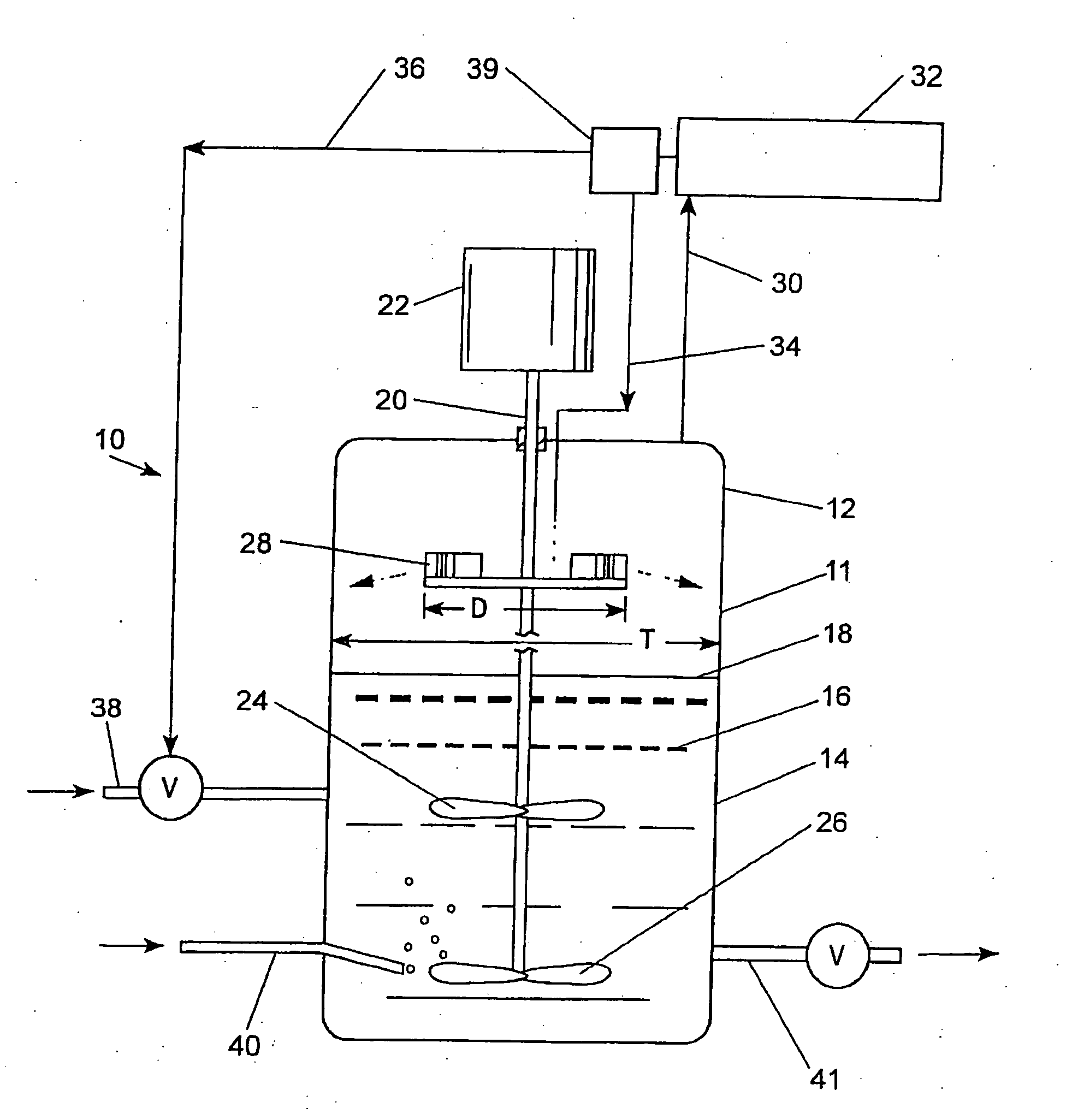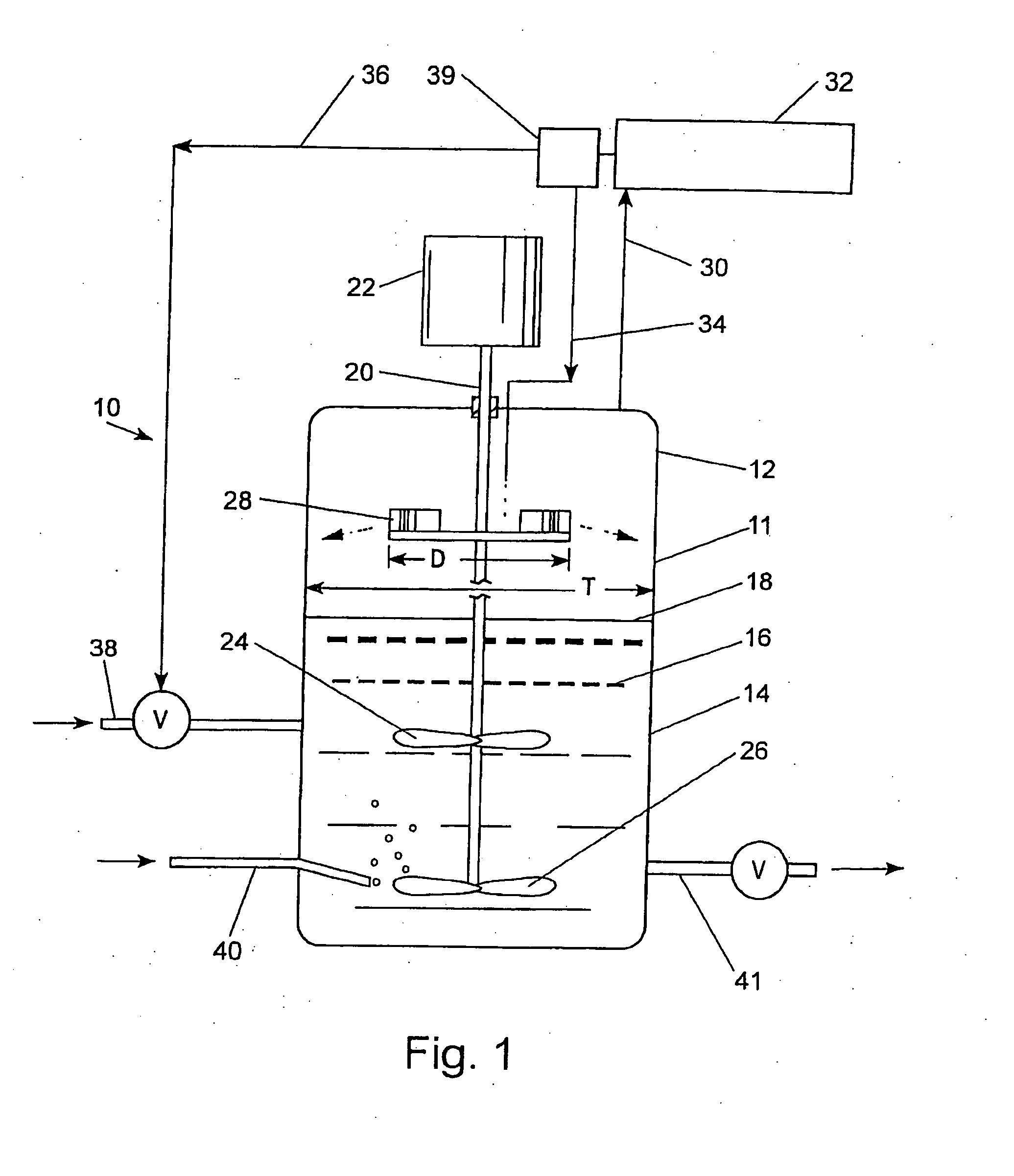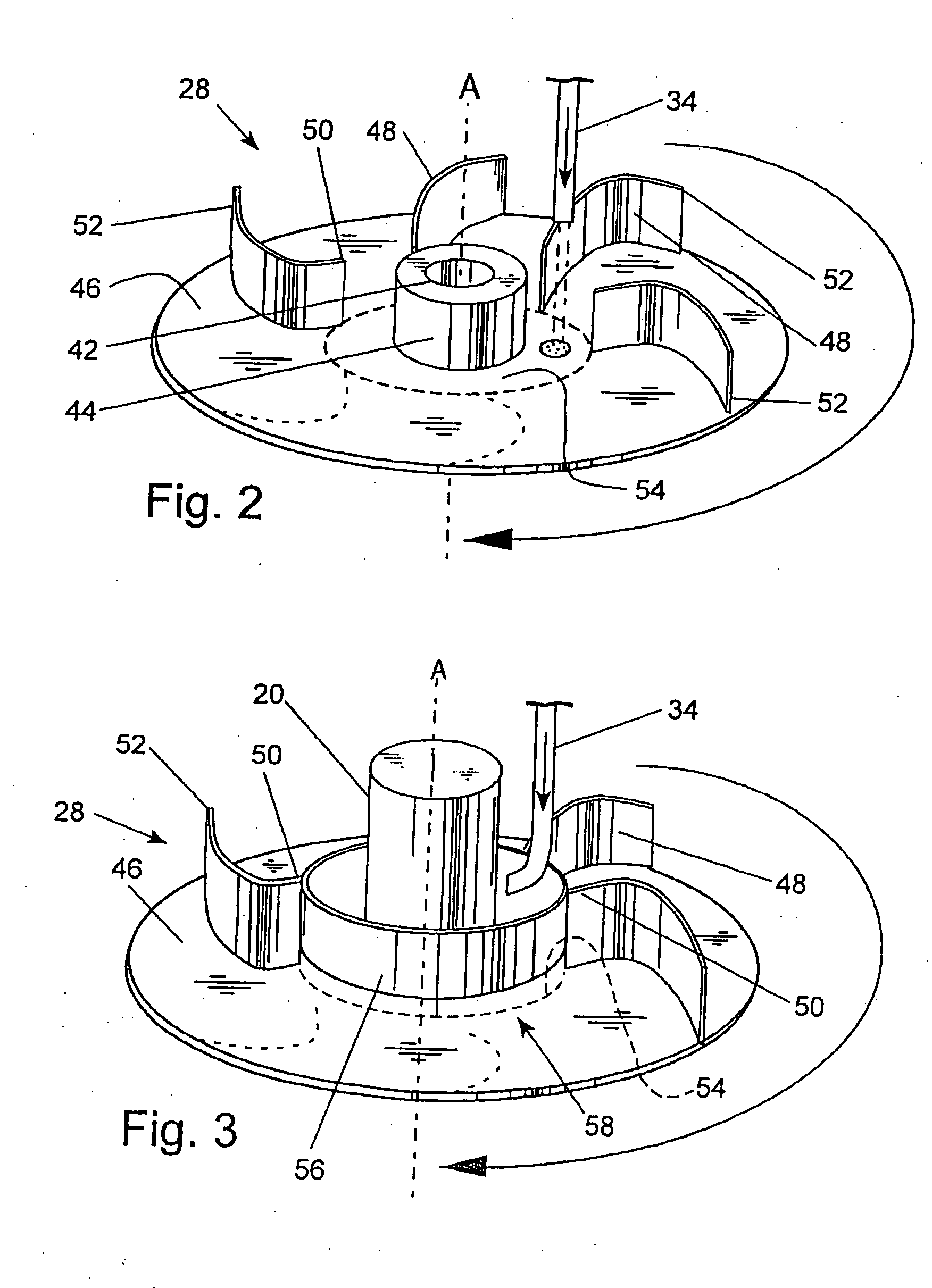Liquid-gas phase reactor system
a reactor system and liquid gas technology, applied in the direction of rotary stirring mixers, transportation and packaging, preparation of carboxylic compounds, etc., can solve the problems of wall fouling, condenser inlet plugging, and conventional slinger designs providing only a modest improvemen
- Summary
- Abstract
- Description
- Claims
- Application Information
AI Technical Summary
Benefits of technology
Problems solved by technology
Method used
Image
Examples
Embodiment Construction
[0014]The present invention includes a liquid-gas phase reactor system and a method for oxidizing an organic reactant within a liquid-gas phase reactor system. The reactor system includes a reaction vessel, also referred herein as simply “vessel” or “reactor”. The vessel itself is not particularly critical to the invention and may comprise many boiling-type reactor configurations. As with most reaction systems, the nature of the chemical process will dictate the configuration and construction materials of the vessel and auxiliary equipment. For example, stainless steel or titanium materials are often used with highly corrosive chemical processes whereas carbon-based steels may be applicable for non-corrosive environments. For most applications, the vessel includes a circular cross-section such as a vertically aligned cylinder with an upper section corresponding to the head space region and a lower section corresponding to the liquid level of the liquid phase reaction medium within t...
PUM
 Login to View More
Login to View More Abstract
Description
Claims
Application Information
 Login to View More
Login to View More - R&D
- Intellectual Property
- Life Sciences
- Materials
- Tech Scout
- Unparalleled Data Quality
- Higher Quality Content
- 60% Fewer Hallucinations
Browse by: Latest US Patents, China's latest patents, Technical Efficacy Thesaurus, Application Domain, Technology Topic, Popular Technical Reports.
© 2025 PatSnap. All rights reserved.Legal|Privacy policy|Modern Slavery Act Transparency Statement|Sitemap|About US| Contact US: help@patsnap.com



